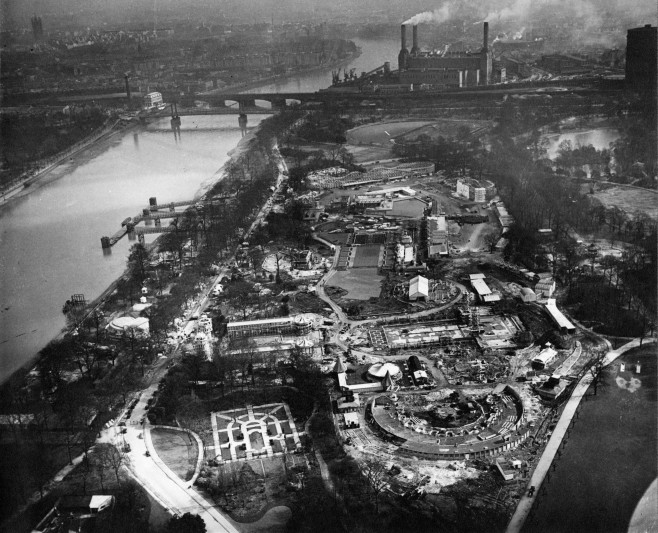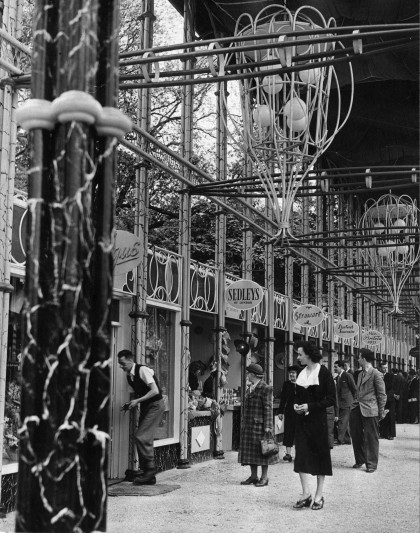The Harrison & Seel archive consists of photographs, drawings, sketchbooks and miscellaneous items (press cuttings, magazines, copies of the official guide and other paper documents, as well as four mid-18th century hand-coloured engravings of Vauxhall & Ranelagh Gardens that the architects used as a source of inspiration).
This extensive archive represents a very fine addition to the RIBA Collections, as it documents a very important moment in Britain’s cultural and architectural history, recording a lesser-known aspect of the Festival of Britain that has left even fewer physical traces than the South Bank Exhibition at Waterloo. Complementing this exhibition, the Pleasure Gardens were designed to recreate in spirit the long-vanished pleasure gardens at Vauxhall, and their fun, colourful buildings were inspired by the whimsical architecture of their predecessor. They were planned for a temporary site in Battersea Park, under the supervision of the architectural firm Harrison & Seel, who were appointed Chief Architects in 1950.Apart from overseeing the project, the firm was responsible for designing several of the buildings themselves, of which there are drawings and photographs in the archive.
The archive - which also includes a range of material concerning the processes of design and construction, with much photographic evidence for the often innovative construction techniques employed - now complements the considerable amount of material on the Festival (almost all concerning the South Bank site) that the RIBA Library already holds. The inclusion of this archive in the RIBA Collections will allow scholars, architects, designers and the general public to study, analyse or simply acquaint themselves with a project that exemplifies a period of great innovation and creativity in British architecture.

